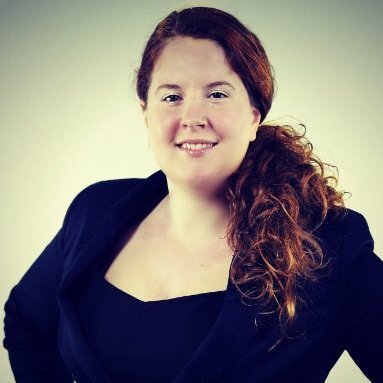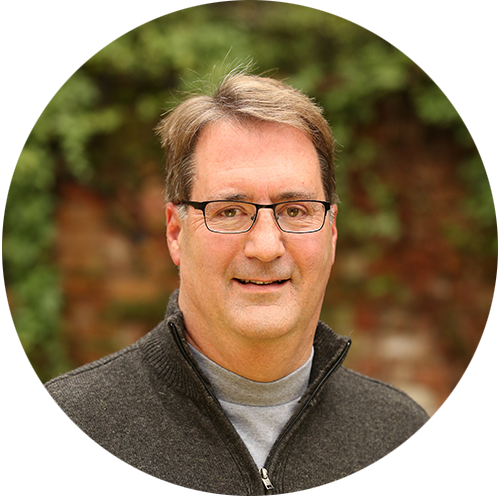How the ACS Uses Content Marketing to Attract Scientists
The American Chemical Society uses content marketing to attract scientists to their products - journals, which contain more content. How do they do it? How do they persuade scientists to publish in their journals?
Of course scientists care about Impact Factor. But that is a feature. ACS goes beyond that to tell a story about the journal and the editors behind it. The idea is to make scientists want to be part of the same story.
Wendy Wise, the Assistant Director for Content Marketing described for me some of the approaches they take.
One is to focus not on the journal itself but the editors behind the journals (active researchers themselves) their work, and their vision. To cut through the clutter, they produced a series called In the Lab, telling the story in a different way. They employed a 360-degree camera to take photos of the editors own research labs. Curiosity about where people work and learning more about them creates an affinity toward them.
For the launch of a new open access journal, they did a novel teaser campaign with interactive content. The team took advantage of digital scratch-off (like a lottery ticket) to give clues about the new journal. This tactic gathered 10,000 subscribers to the email list for the new journal. That worked well because scientists want to solve problems.
Wendy says the key to all their content marketing is to make it stand out. It needs to be different enough to knock people off guard and make them pay attention.
About My Guest
Wendy Wise is the Assistant Director for Content Marketing at the American Chemical Society and that includes 50 journals of the ACS, notably JACS, ACS Central Science, and C&E News.
THe Transcript
This transcript was lightly edited for clarity.
Chris: Today I’m speaking with Wendy Wise. She’s the Assistant Director for Content Marketing at the American Chemical Society and that includes 50 journals of the ACS, notably JACS, ACS Central Science, and C&E News. Wendy, welcome to Life Science Marketing Radio.
Wendy: Hi, thank you.
Chris: This is going to be a good one. Today we’re going to talk about marketing to scientists with content. We do that sometimes, but you’re selling something different than the marketers in my audience. But you still need to engage them with something relevant and that’s where I think the person listening here can learn a lot from you and maybe take away some new ideas. So, you’re marketing a large number of journals from the ACS, each one of those is different.
Wendy: Yup.
Chris: Can you give, for the context of this conversation, give or describe the range of publications you’re talking about?
Wendy: Well, so we publish, as you mentioned, around 50 journals and we have everything from the multidisciplinary nature journals, such as JACS, and ACS Central Science, and ACS Omega, which are more general chemistry and interested in papers from all around the different areas of chemistry. And then, we have journals that are very specific to a topical area like Biochemistry or ACS Chem Neuroscience or ACS Nano that focus on a particular area in chemistry and a smaller group, then, a smaller target audience exists for those journals.
Chris: And each one has an editor who is a person working in a lab, right, not a publishing house?
Wendy: Yeah, exactly. So, this is what makes our journals, as a publisher, pretty unique in that we have these active researchers heading our journals. So, people who are in the lab who are constantly experimenting and pushing the boundaries of science themselves, reading papers and publishing work that’s relevant to their area that they’re active research or experts in.
Chris: And how do you work with them to kind of set an editorial agenda?
Wendy: So, we have a different group, besides the marketing team, called the Editorial Development Group that works quite closely to develop the scope. But it’s really the editor’s vision for the journal is what we try to promote and work with. Of course, ACS Publications maintains some overview of that as well. But mainly is the editor’s vision that we’re trying to fulfill.
Chris: And do they have, this just came to my mind, do they have an unlimited tenure at this job or as long as they want to do it or…?
Wendy: No, it’s not unlimited. Most of the time it’s at the editor’s discretion. These people are really, really busy rock stars in the scientific world. So, you know, sometimes they’re happy to be editor for 20 years and sometimes they say after 5 years, “You know what, I’d rather not re-sign this contract because I’ve got other initiatives I’m working on right now and I just want to move on to something different.”
Chris: Right, that makes total sense. I was just curious because I thought, yeah, it’s a long time to do something and how do you guys keep it fresh and so on.
Wendy: Yeah.
Chris: Of course, your goal is to get scientists to publish in those journals.
Wendy: Yes.
Chris: And what does it take to make them think that you’re the right fit? Like a particular journal, how do you make them think, “My story or my manuscript needs to go in here?”
Wendy: Well, so the publishing world in sciences hinges on a lot of metrics. One of those metrics that is used to judge whether or not a journal is significant is called an impact factor and that’s published by Thomson Reuters. So, we do a lot of marketing around what our different impact factors for our journals are, but that’s not the entire story behind any of our products.
So, we have actually sort of turned a new leaf in that we’re doing more content marketing to try and interest folks into publishing their articles with us. And one of the initiatives in the content marketing sphere that we’ve been pushing is our new blog called ACS Axial. And that blog was set up so that we could tell the story behind the journals. Because when you have these really prolific scientists reading your brand, there’s just so much information that you can interest people with. What are they doing in their labs? What is their personal history like? And you can…there’s just different stories to tell behind that, as well as for our services.
We do a lot of things like open access programs and author services and there are stories to tell behind those as well. So, we’ve been running a blog and daily publishing new stories about our products and services and then emailing out our opt-ins and our interested marketing lists, once a month, with different newsletters tailored to their tastes.
Chris: Yeah, so I’m more curious to hear about these personal profiles. Are you publishing kind of a portrait of someone’s career and the path they took, the science they’ve done to get where they are? What does that look like?
Wendy: Yeah, so we’ve done stories like that, you know, where you do like a profile story on your main subject, in this case, our active research editors. But we’ve actually been trying to push the boundaries of the stories that we’re telling and the ways that we’re telling them too, because I mean, people have so much to read these days that we’re not necessarily thinking they’re going to stop what they’re doing so that they can just read another article that they’re lambasted with about more subject matter or more scientific stuff. So, we’ve been trying to do sort of new and unique formats when coming up with blog posts. And one of the most recent blog posts we did was using what we call a 360 camera. We brought the 360 camera into one of our active researcher editors’ labs and we used the camera to photograph his entire lab, so that when we got the images back, it was, I don’t know if you’ve ever seen like the HGTV dream house, but it was like one of the rooms in the HDTV dream house where you could move the image around and see the entire lab and see all of his equipment. And, we pointed out different things on the video as to what he was working on. And it became kind of this really interesting interactive story that we could tell with images instead of 500 words or 1000 words that people could look at relatively quickly and that they got excited about. And we’re hoping that that excitement that they felt looking at the 360 video then will translate into excitement about the journal itself. And we called that, it’s a series, it’s called “In the Lab,” with our various editors.
Chris: I like that. I mean it’s just a novel kind of content to have those 360° images. I think everybody’s curious about what the labs of people they’ve worked with actually look like or people whose papers they’ve read. They want to know what other people have, what they’re doing, and how they solve those problems. So, I think that’s a great idea.
Wendy: Thanks.
Chris: Yeah. You mentioned previously also sort of an innovative campaign around launching a new journal. Can you tell us about that?
Wendy: Yeah, so last year we ran a campaign to launch a journal that we launched this year in the summer called ACS Omega. It’s one of our newest open-access journals. But we had a little bit of time before we were going to let people know that it existed. So, we decided that we were going to do something a little bit different and we wanted to sort of tease people as to what was coming. So, we had something called a teaser campaign that ran about two weeks before we made the announcement about this new journal that we launched. And, we did that through what we called our clue campaign. I don’t know if you recall, if you go to 7-Eleven and you buy a lottery scratch-off or something, you use a coin to scratch off stuff that’s underneath. One of my bosses had this idea that we should use some sort of scratch-off campaign in a mailing or in a something and instead of using like a paper mailing we decided that we were going to take that concept and use it in this campaign in using that program called Scratch It, which is like a digital scratch-off.
So, we sent out some emails, clues basically, as to what this new journal was going to be about. So, we did about four scratch-offs and every time you scratched off one of our scratches, it revealed a letter from the name of the new journal. So, we had people scratch-off ‘O’ for open access and ‘M’ for multidisciplinary and ‘E’ for extradited publishing time and ‘G’ for global, as this was a very global journal that we were launching. And, we had a lot of fun and a lot of success with that campaign. People were excited to find out what it was. They weren’t sure. We teased them about a big announcement coming two weeks from now, to keep following us with the clue campaign and keep scratching off letters as they were released. And we saw about…we used that campaign to get people to sign up for our email list and we saw, at the end, about 10,000 folks had subscribed to our email list for this new journal, which was fantastic. I mean, we were just, we were thrilled with that number.
Chris: Yeah, that’s phenomenal. I think it’s a brilliant result and, obviously, an engaging thing that got people interested. Scientists are curious. They also want to be the first to figure something out. So, a teaser thing like that…
Wendy: Exactly. Yeah, yeah exactly. They’re very smart and they like to solve problems and so we gave them this sort of, something they could guess at. And we got a lot of guesses in too, that were pretty interesting. Nobody guessed the right name of the journal, which turned out to be ACS Omega, but we had some really interesting, interesting names.
Chris: Now, I’m curious about the branding of the journal itself. Omega, was it exactly as you said there, open-access multidisciplinary, or was the name chosen for some other reason and then you figured out those?
Wendy: You know, it’s funny. We hired a… There’s actually a group that came in, a consulting firm that attempted to help us name the journal. So, they were a naming consulting group that have named big pharmaceutical products in the past and whatnot, and they were good. They started the brainstorming process for us, but we actually came up with the name on our own through a kind of late-night email brainstorm group email with about five of us just going through different ideas, different names, different iterations. I think, we started with Alpha, Gamma, whatever. We went through the whole Greek alphabet before somebody said, “Hey, what about Omega?” And, we were like, “Oh my gosh, that’s a perfect name for this journal” because of the open access nature of it and it’s also going to be publishing a substantial amount of articles and sometimes we refer to those as mega journals.
Chris: Oh, okay. I love that story. I’ve been involved in a couple of naming projects and I don’t know what other people’s experiences have been, they’re harder than you can imagine. And I have seen, honestly the most, I don’t want to say intense “battles” in a conference room that I have ever seen over the naming of a product.
Wendy: Wow.
Chris: The most intense marketing discussions ever because people get very emotional around those things. It was amazing because there were some constraints on us about what we could and couldn’t use and there was a historical name, but we had to rebrand something. And yeah, people had some very strong feelings about it. And then, the other ones where it’s just like you come up with a gazillion names and there’s already a big product line and how do you make it new and interesting and not contrived or whatever. It’s a hard thing.
Wendy: It’s a very hard thing. We actually had a name that we were using internally. We called it code name something else. I’m not going to say what the other name was, but that we were using internally and we didn’t have everybody on board with that name. And so, I think it became important to find one that was universally liked internally and that one, I mean, pretty much won out immediately.
Chris: Well, that’s a great story. Well, I love all this stuff that you’re doing and what I think people are going to take away from this is really just thinking about new ways and new types of content. Again, with the 3-D camera, it’s not about science itself or any particular part of chemistry, it’s about the people who are doing it. And they’re interested in that and they have curiosity about that. And then, with your scratcher campaign, it is content marketing. You’re getting people involved in a contest. It’s interactive content, which actually is probably more rare than any other type of content. So, that’s another brilliant example and, hopefully, people listening to this get some new ideas for things they can do for selling instruments or reagents or whatever else they’re doing.
Wendy: Yeah, you definitely have to sort of knock people off guard a little bit because, as I said, they’re getting so many emails every single day. Unless your product or your push or your content is a little bit different than everybody else’s, it’s going to be hard to stand out. That’s always what I feel like, and so, my team and myself and my colleagues we push really hard to try to be innovative in our marketing.
Chris: I won’t even restate that, I mean, that’s it. You just said it. That’s the lesson that hopefully more people will listen to. Well, Wendy thank you so much for being on the podcast. Is there someplace we should point people to see some of these examples or can you send me some links and I’ll put them in the show notes with the podcast?
Wendy: Yeah, absolutely. I would encourage everyone to check out our blog, ACS Axial, and that’s Axial, axial.acs.org.
Chris: Okay. I’ll definitely put that in the show notes. There’ll be a link there and thanks again.
Wendy: No problem.













